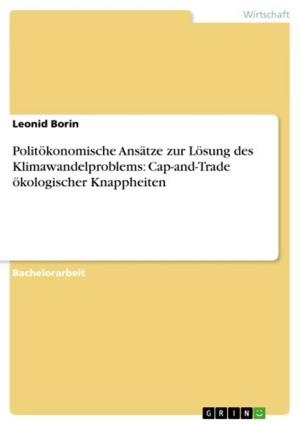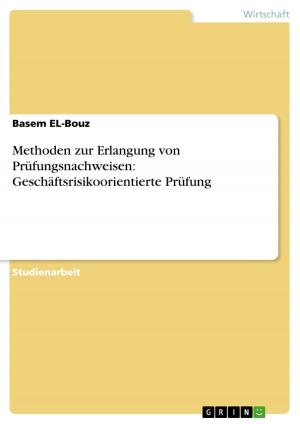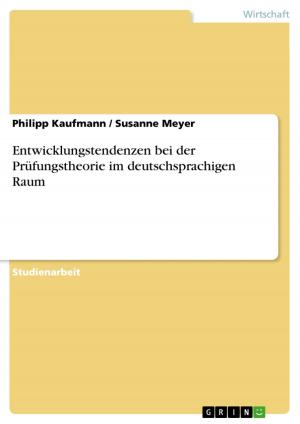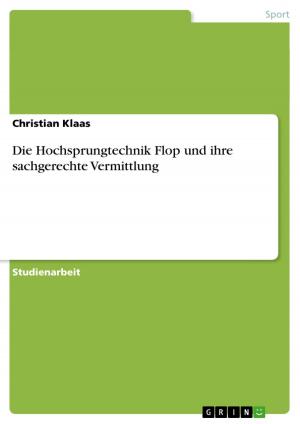The Language 'Tok Pisin' in Papua New Guinea. English in the Pacific and the Indian Ocean
English in the Pacific and Indian Ocean
Nonfiction, Entertainment, Drama, Anthologies| Author: | Maike Naujoks, Nina Schulte-Schmale | ISBN: | 9783640212248 |
| Publisher: | GRIN Verlag | Publication: | November 17, 2008 |
| Imprint: | GRIN Verlag | Language: | English |
| Author: | Maike Naujoks, Nina Schulte-Schmale |
| ISBN: | 9783640212248 |
| Publisher: | GRIN Verlag |
| Publication: | November 17, 2008 |
| Imprint: | GRIN Verlag |
| Language: | English |
Seminar paper from the year 2008 in the subject English Language and Literature Studies - Linguistics, grade: 1,7, Justus-Liebig-University Giessen (Justus-Liebig Universität Gießen), course: English in the Pacific and Indian Ocean, 8 entries in the bibliography, language: English, abstract: For many years the study of Pidgin and Creole languages was widely regarded as marginal or frivolous, but recently, there has been growing interest in the study of these languages all over the world. They have not merely been studied for their own sake, but for the relevance to such concerns as language contact and change, historical linguistics, language learning, first and second language acquisition or language universals (cf. Smith 2002: 3). With this, the area of the Pacific and Indian Ocean has become increasingly significant for linguists. There are many reasons why the position of Tok Pisin, one of the two national languages of the independent nation of Papua New Guinea (with Hiri Motu as the other and alongside English as the official language), stands in the continued focus of scholarly attention. In a variety of ways, the position of Tok Pisin is like that of many other pidgin and creole languages elsewhere and it has a number of advantages as a source of data, as it is one of the best documented contact languages, however, 'Tok Pisin is somewhat unusual among the Pidgins of the world in its gradual development over several generations as a second language before any extensive creolization took place.' (Smith 2002: 6). In spite of the work already carried out, there are still a few gaps in the current knowledge of some aspects of Tok Pisin and much of the literature is concerned only with the historical development of the language and the description of its linguistic properties, but it is not always clear how representative the features described are (cf. Smith 2002: 22). The purpose of this paper is to closer examine the language concerning its history, linguistic features and current situation. We will start with some general background information about Tok Pisin and the region where it is spoken, the development of Tok Pisin into a creole language, the current situation and the external history. Then continue with the linguistic features of Tok Pisin with regard to the specific phonology, morphology, syntax and lexicon, and illustrate them on a text sample. And finally we will take a closer look at the educational system of Papua New Guinea, as well as its media, concerning the use of Tok Pisin. In particular, the relationship between Tok Pisin and its main lexifier language English is of primary importance and is explored in further detail in almost every section.
Seminar paper from the year 2008 in the subject English Language and Literature Studies - Linguistics, grade: 1,7, Justus-Liebig-University Giessen (Justus-Liebig Universität Gießen), course: English in the Pacific and Indian Ocean, 8 entries in the bibliography, language: English, abstract: For many years the study of Pidgin and Creole languages was widely regarded as marginal or frivolous, but recently, there has been growing interest in the study of these languages all over the world. They have not merely been studied for their own sake, but for the relevance to such concerns as language contact and change, historical linguistics, language learning, first and second language acquisition or language universals (cf. Smith 2002: 3). With this, the area of the Pacific and Indian Ocean has become increasingly significant for linguists. There are many reasons why the position of Tok Pisin, one of the two national languages of the independent nation of Papua New Guinea (with Hiri Motu as the other and alongside English as the official language), stands in the continued focus of scholarly attention. In a variety of ways, the position of Tok Pisin is like that of many other pidgin and creole languages elsewhere and it has a number of advantages as a source of data, as it is one of the best documented contact languages, however, 'Tok Pisin is somewhat unusual among the Pidgins of the world in its gradual development over several generations as a second language before any extensive creolization took place.' (Smith 2002: 6). In spite of the work already carried out, there are still a few gaps in the current knowledge of some aspects of Tok Pisin and much of the literature is concerned only with the historical development of the language and the description of its linguistic properties, but it is not always clear how representative the features described are (cf. Smith 2002: 22). The purpose of this paper is to closer examine the language concerning its history, linguistic features and current situation. We will start with some general background information about Tok Pisin and the region where it is spoken, the development of Tok Pisin into a creole language, the current situation and the external history. Then continue with the linguistic features of Tok Pisin with regard to the specific phonology, morphology, syntax and lexicon, and illustrate them on a text sample. And finally we will take a closer look at the educational system of Papua New Guinea, as well as its media, concerning the use of Tok Pisin. In particular, the relationship between Tok Pisin and its main lexifier language English is of primary importance and is explored in further detail in almost every section.















